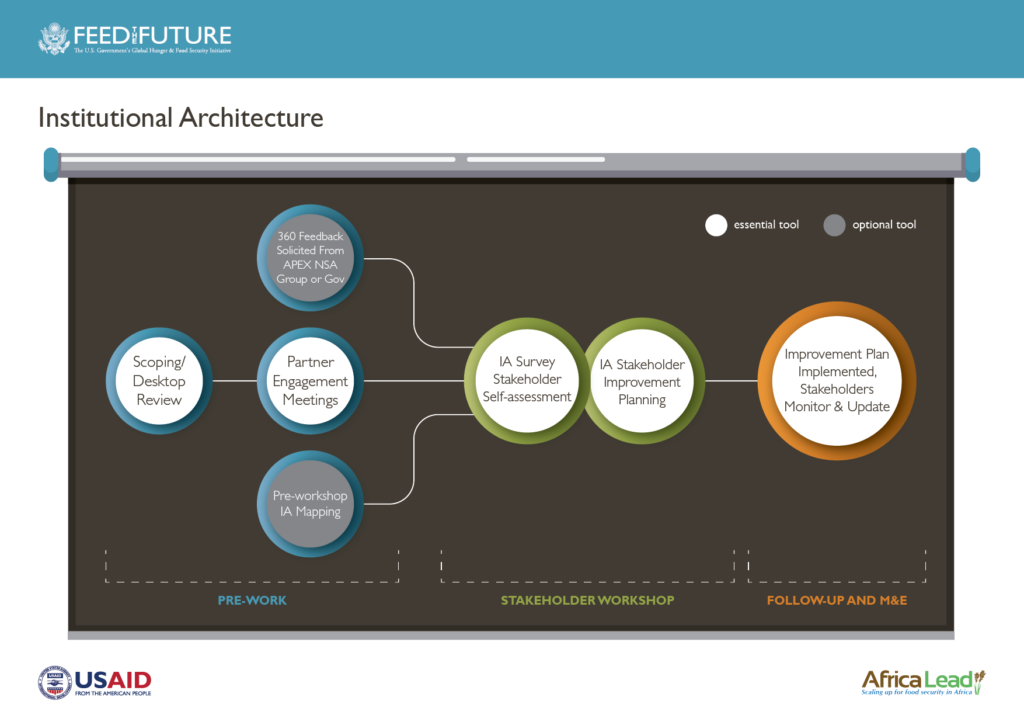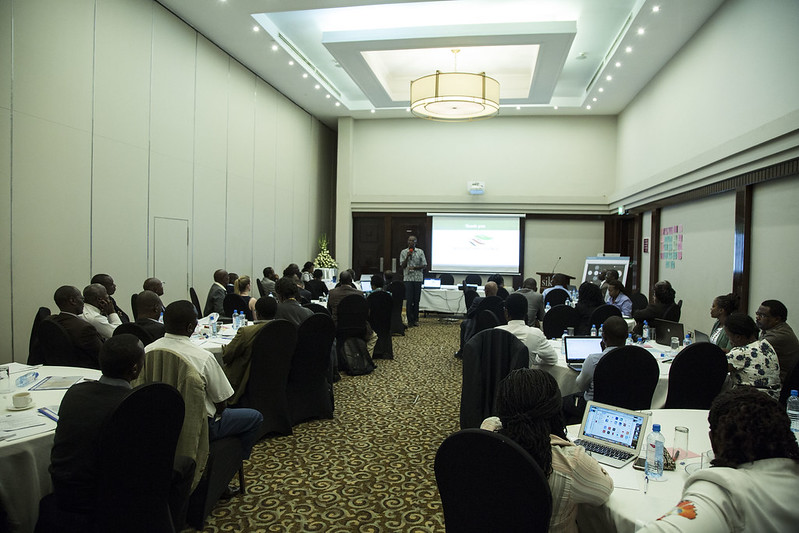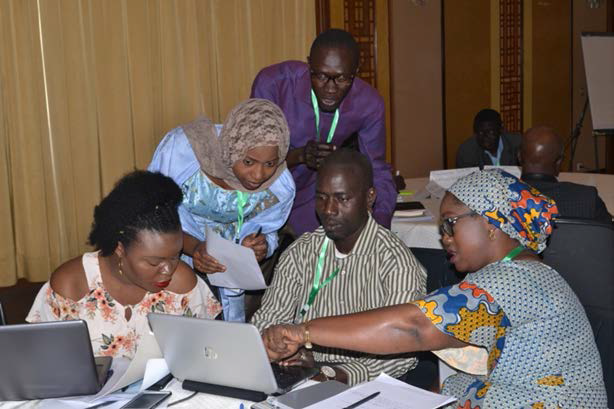IA Workshop Process

Overview
Institutional architecture refers to the multi-stakeholder and multi-sectoral processes, relationships, and functional structures at multiple levels (including subnational, national, regional, continental and global) to manage food security policy change. Within the context of food security, IA reflects both the capacity of specific types of organizations (such as ministries, policy think tanks, citizen interest groups and district governments), as well as the processes through which these organizations interact towards a common food security goal. Effective investments in a country or region’s IA increase durable local capacity and are a building block towards self-reliance. A country’s capacity to undertake transparent, inclusive, predictable, and evidence-based policy change is fundamental to improving food security outcomes. For example, a robust IA supports multi-sectoral coordination between and among government ministries to jointly formulate a national agriculture investment plan. Investing in strengthening a country’s IA for food security policy is a USAID GFSS priority as it provides a foundation for building the systemic capacities for managing a multi-sectoral food security program.
Since 2013, in-depth institutional architecture (IA) assessments have been used by the USAID Bureau of Food Security, USAID Missions, local policymakers and other key stakeholders to better understand possible constraints that could stymie effective policy change in countries such as Ethiopia, Tanzania, Malawi, Ghana, Senegal, Kenya and regionally for the East African Community (EAC). The IA framework was designed to provide a scan of the capacities fundamental to policy development and implementation; and to align with the commitments and principles of the African Union’s Comprehensive Africa Agriculture Development Programme (CAADP) and the Paris Declaration Aid Effectiveness. In particular, country’s commitment that: 1) planning and implementation should involve the inclusive participation of a wide range of stakeholders, including the private sector and civil society organizations; and 2) decision-making should be evidenced-based. CAADP was initiated by the African Union (AU) in 2002 and was designed to help countries increase agricultural productivity by at least six percent per annum and achieve the United Nations Millennium Development Goal number one, which is to cut hunger in half by 2015.
Assessment Reports by Country or Region
Institutional Architecture Toolkit
More recently, repeat IA assessments in Kenya and Malawi have demonstrated that this approach can be useful as both a process and a tool to help an inclusive set of stakeholders reach a shared understanding of the current strengths and weaknesses in a country’s IA, and to build consensus around a set of key priorities and actions to strengthen the reform system necessary for managing a multi-sectoral food security program. Africa Lead’s experience in Kenya and Malawi also suggests that periodic reviews of IA status, involving local stakeholders, can also be a useful tool for monitoring progress over time and exerting pressure for change. Because of this learning, Africa Lead is developing a set of customizable tools and approaches based on the IA framework to facilitate a structured, consultative process for local stakeholders to reach consensus on the current IA status, prioritize key issues and develop solutions in a participatory way.
The purpose of the IA Toolkit is to provide a set of customizable and adaptable resources to help country-level stakeholders improve their institutional architecture:
- Convene a set of relevant stakeholders from inside and outside of the government to own and steward the IA improvement process
- Assess IA capacity and performance in a participatory and periodic manner;
- Build consensus and buy-in around priority action items;
- Plan capacity development interventions and technical assistance; and
- Monitor results.
The IA Toolkit is divided into four stages: pre-work consultation, multi-stakeholder self-assessment, issue prioritization & action planning, and ongoing learning & follow-up.
Download Toolkit
Kenya Pilot Workshop
- Annex 1 Agenda
- Annex 2 List of Participants
- Annex 3 Kenya IAA 2017 Recommendations
- Annex 4 Kenya IAA 2017 Results
- Annex 5 Sample Questionaire
- Annex 6 Sumary of the Group Scores & Breakout Group SWOT
- IA survey 27.2.18
- IAA Brief
- Institutional Map for Food Security
- JSR Principles Brief
- Kenya Action Plan_3_5
- Kenya FS IAA Report
- Kenya IA Workshop Draft Agenda 126th Feb 2018 Final
- Kenya IAA 2017 Recommendations
- Kenya IAA 2017 Results
- Role of IA and MA in Agriculture and Food Security 26th Feb- Dorcas

